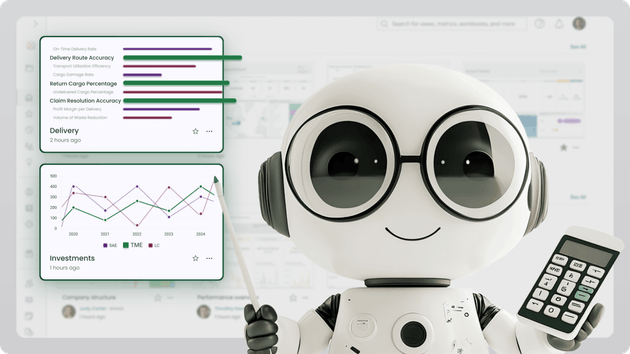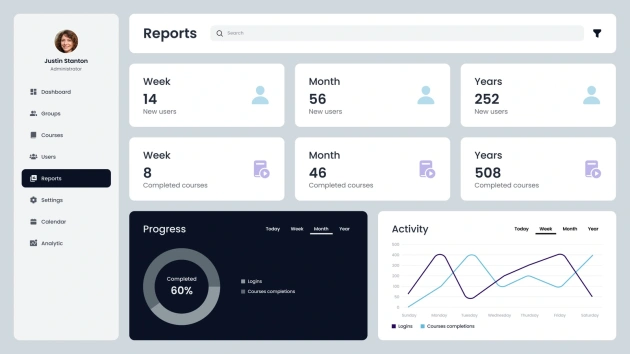“How do I retain my employees long-term and keep them motivated?”
This is a question many employers in different sectors ask themselves – especially during times of skilled labor shortages. High turnover not only disrupts daily operations but also leads to significant financial costs.
In this article, we’ve highlighted why it is important to monitor employee engagement and outlined key strategies you can take now to successfully and sustainably retain employees within your organization.
Basics of employee retention
Employee retention refers to an organization’s ability to keep employees and minimize unwanted turnover. While much of the focus is on retaining top talent – those who are knowledgeable, skilled, and highly productive – retention also applies to key roles critical to delivering a product or service.
While employee retention has long been a priority for human resources teams, it is becoming even more crucial as positions grow harder to fill: only 3 out of 10 employers successfully fill their job openings. It aims to create an environment in which employees:
- are valued,
- are listened to,
- and are involved in strengthening their professional commitment.
Employee loyalty is based on a relationship of mutual trust that goes beyond the purely professional context.
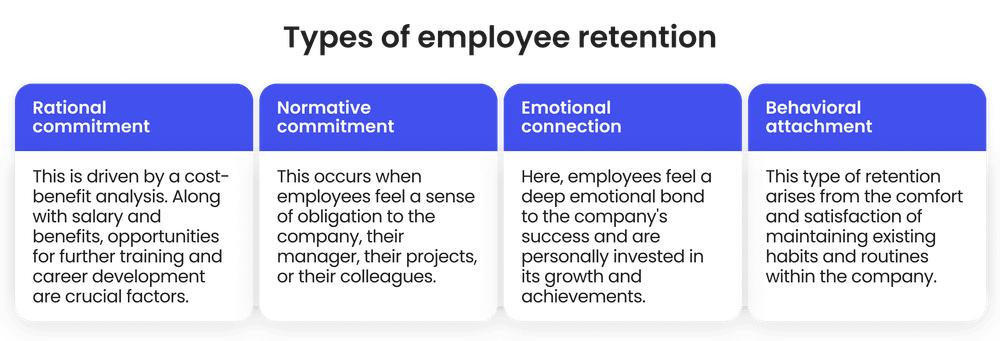
When considering the different types of employee loyalty and their effects, emotional loyalty stands out as a particularly powerful driver. When employees feel emotionally connected to the company, turnover and absenteeism decrease, commitment increases, and exceptional performance becomes more frequent.

Gaining insight into how open employees are to new job opportunities can help reveal their intentions – whether they’re thinking about sticking around or planning to move on.
And those intentions are more common than ever:
Gallup estimates that one in two employees is considering a job change. The detailed graph below shows the extent to which surveyed employees are currently seeking a job different from their current one.
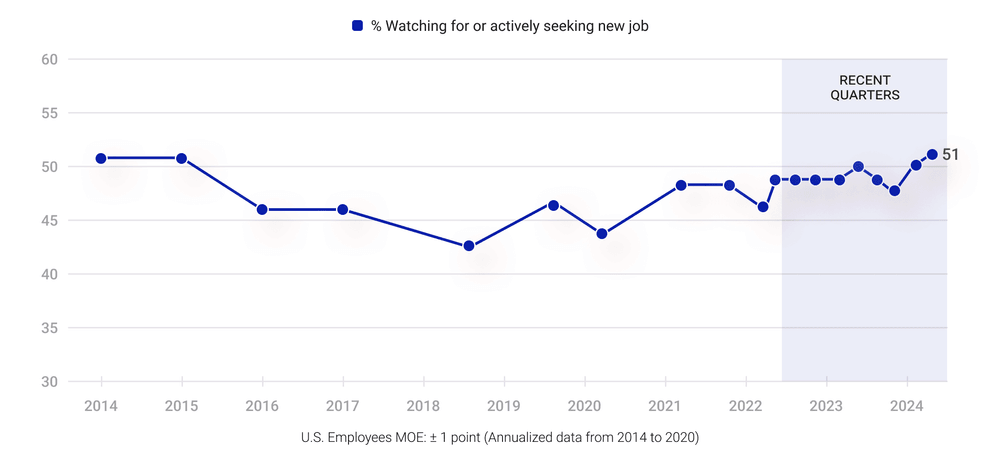
Managers must understand how employees perceive their work environment and why they choose to either leave or stay with an organization – a hands-on approach can help with that.
Why monitoring employee turnover is important
Employee turnover rate is a key workforce management metric that offers valuable insights into employee engagement and satisfaction. Without tracking turnover, it’s impossible to understand its root causes, which can create significant blind spots when assessing company culture and employee morale.
Turnover serves as an indicator of your company’s overall health. If you’re losing top talent, you’ll end up spending more on recruiting, hiring, and training new employees.
McKinsey experts are more unambiguous in their conclusions: employee attrition can be extremely expensive.

High turnover can also negatively affect customer experience and satisfaction. Departing employees take valuable knowledge and experience with them, leading to potential service disruptions and inconsistencies that can frustrate customers. If you’re not monitoring turnover, you could miss several critical impacts.
To get the variables you need for the employee turnover calculation, check out the formula below.

While it’s difficult to quantify some of the hidden costs of turnover – such as decreased morale or shifts in company culture – you can still estimate the impact using practical methods. For instance, comparing productivity and profits before and after turnover can help reveal how much you’ve lost due to lowered employee engagement.
Here’s a simple formula to calculate the cost of employee turnover, which will help you and your accounting team understand the financial impact of losing and replacing employees:

Let’s consider a software company that employs 30 QA engineers. After reviewing their financials, they find the following costs associated with turnover:

The company also evaluated the difference in productivity between periods of low and high turnover. They found that they lost an average of $15,000 annually per engineer due to delays, project interruptions, and the time it takes for new employees to become fully productive.
With a turnover rate of 10% (0.10) annually (meaning they lose 3 engineers per year), the turnover cost calculation looks like this:
In this case, the company’s annual turnover cost is $36,000. If they had improved retention and reduced turnover by just one employee per year, they would have saved $30,000 annually.
Who's to blame and what to do
While your employee turnover rate tracks all departures, it doesn’t explain why employees leave. To gain clearer insights, consider segmenting turnover into specific categories, as the reasons behind it provide valuable context for improving retention.
The key difference between voluntary and involuntary turnover lies in the employee’s choice:
- Voluntary turnover occurs when an employee decides to leave, such as for a new job, further education, or retirement.
- Involuntary turnover happens when employees are laid off or terminated for not meeting job expectations or due to budget cuts.
Turnover can also be desirable (benefiting the company) or undesirable (hurting the business). These categories can overlap – such as when a top performer is laid off due to budget constraints.
HR professionals should consider the following before making long-term strategic decisions:
1. External hiring isn’t a silver bullet
At first glance, filling open roles might seem easy given the number of candidates out there. But in practice, promoting from within leads to stronger employee loyalty and lowers turnover risk – key priorities in today’s workforce, especially with the rise of “quiet quitting.”
Many companies turn to internal promotion only when external hiring becomes difficult.
However, a study by Harvard Business Review found that internally promoted managers typically outperform external hires, earning higher performance ratings and leading teams with lower turnover.
Here’s the paradox: during uncertain times, promoting from within actually builds stability and loyalty – two things that can make all the difference when a company is navigating change.
2. Talent management should be built for the long haul
In a world where trends shift daily, some hiring decisions can feel reactive. But a long-term approach to employee development fosters a deeper emotional connection to the company. It’s up to HR to nurture that bond by encouraging continuous growth and providing meaningful career paths for existing employees.
Promoting a team member can be a powerful motivator for others, strengthening the overall team dynamic. It can also spark reflection – if someone they respect is advancing, others may start to ask themselves: “Should I be aiming higher too?”

So, how do businesses make that happen? Let’s explore a few practical strategies
Strategies to prevent employee churn
When it comes to internal talent management, the key to success lies in the hands of managers. They must be made aware of the importance of this issue and trained in their role as talent scouts.
Comprehensive leadership training on talent management should cover the following areas:
- The importance and benefits of talent management for the company
- The role of managers as talent scouts
- Communicating the company-specific definition of the desired talents
- Methods for identifying talent
- Methods and programs for talent development in collaboration with human resources
- The company-specific workflow of talent management processes
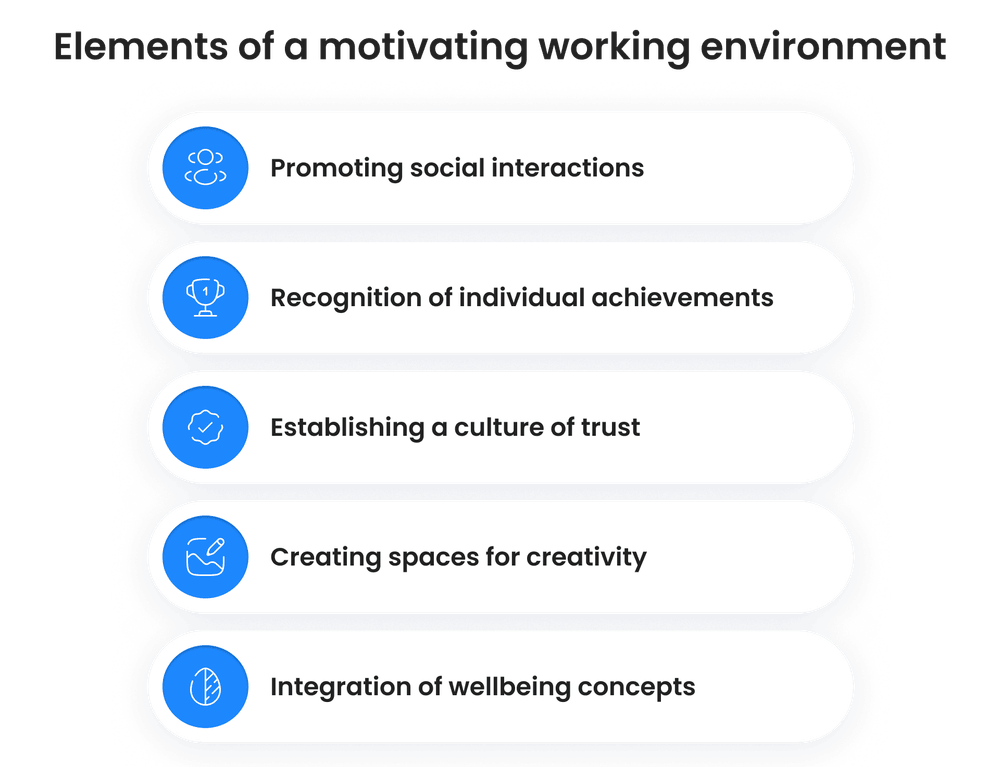
In addition to emotional factors, three strategic approaches also play a role.
1. Enabling workforce with AI
While AI and ML have been around for years, only recent breakthroughs have made their potential truly tangible – sparking widespread discussions about their impact on jobs.
But rather than simply replacing workers, AI is transforming talent strategies by increasing the density of roles, enabling employees to do more meaningful, high-value work.
In practical terms, this leads to major savings in time and resources for businesses. AI-powered solutions reduce administrative burden, improve efficiency, and help prevent burnout and turnover — ultimately making teams more resilient and businesses more competitive.
In fact, 83% of Zendesk’s study respondents specifically praised AI for improving decision-making and boosting efficiency. Additionally, almost 80% reported that the quality of their work has noticeably improved thanks to AI capabilities.

An AI-enabled workforce supports flexibility, personalization, and smarter decision-making – key expectations of today’s adaptable employees. By meeting these needs, companies can boost engagement and satisfaction, ultimately strengthening long-term retention.
2. Advanced corporate training
Promotions help employees feel greater job security and organizational support during times of economic turbulence. In such environments, those who were promoted were much less likely to consider leaving, suggesting that an early sense of stability and support contributes to long-term loyalty.
This underscores a valuable insight: when employees feel the organization is investing in them, they are more likely to remain loyal. Advanced corporate training serves a similar purpose – it signals growth opportunities, enhances skills, and deepens engagement.
By actively developing talent, organizations not only prepare employees for future responsibilities but also foster a strong sense of loyalty and resilience, ultimately reducing the risk of employee attrition.
To learn more about corporate training, the way it has been developing over the years, and how it is used in practice, check out this profound material.
According to the UK’s 2024 labour market overview, increased training and increased focus on retaining talent became the top tendencies among the companies surveyed.
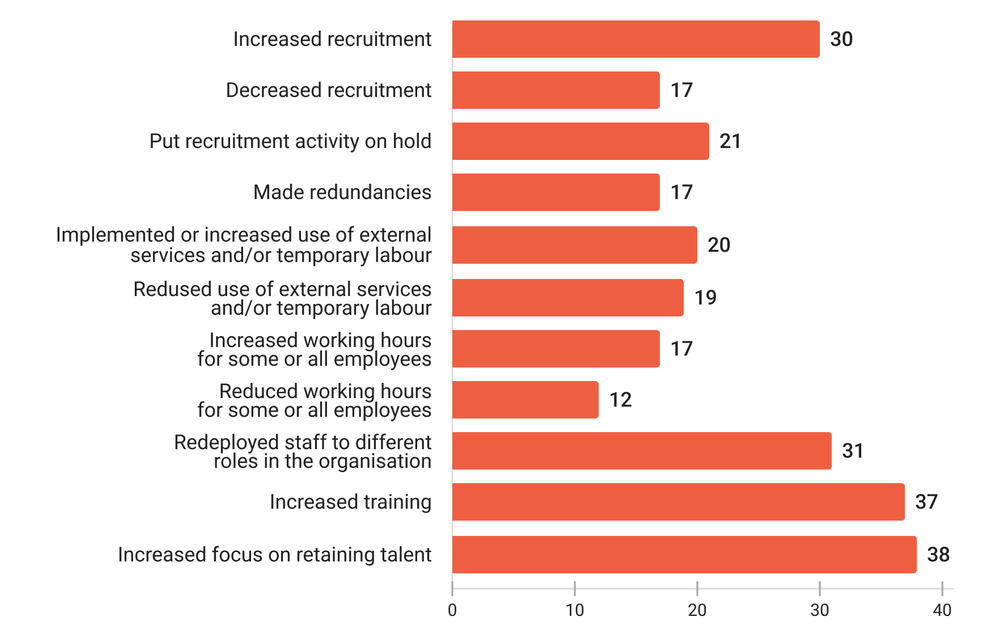
A fine-tuned enterprise LMS can be an indispensable asset for a company in maintaining employee engagement. Learn more about its benefits and capabilities in this article.
3. Career pathing framework
Another important aspect of employee retention is career pathing – a structured approach to career development that shows employees how they can grow within the company.
Targeted development programs and mentoring can help prepare individuals for leadership roles, signaling that the organization is invested in their future and committed to supporting their career goals.
One effective tool within a career pathing strategy is the use of learning management platforms. These provide a flexible, cost-effective way to support ongoing development, allowing employees to learn at their own pace and tailor training to their specific needs.
Check out this material to learn more about building a future-proof eLearning management system, the difference between LXP and LMS, LMS pricing, and more.
According to McKinsey, more than half of young people (54%) aged 18 to 34 consider career growth and advancement opportunities the main reason they stay in their current job. In comparison, only 40% of those aged 45 and older cite the same reason.
Therefore, by offering a transparent, supportive path for growth, career pathing strengthens employee engagement and loyalty, making it a powerful strategy to reduce turnover and retain top talent.
However, make sure you don’t make these 9 common mistakes when setting up a learning management system.
Conclusion
Building an adaptable, forward-thinking workforce is about more than just hiring and retaining talent. It requires a well-structured approach to continuously developing your team, staying aligned with evolving business needs, and making ongoing adjustments to ensure consistent performance.
Fortunately, this doesn’t have to be complicated. Instead of juggling multiple systems and manual processes, HR teams can model scenarios, optimize staffing plans in real time, answer complex talent questions quickly, and take a proactive role in strategic decision-making.
How do we know this for sure? Because we’ve been creating software focused on educational technology for over twenty years, and we’ve seen firsthand how the right tools can drive employee growth, boost engagement, and deliver measurable results for our customers.
Get in touch with us today to create the ideal environment for boosting your employees’ skills.

